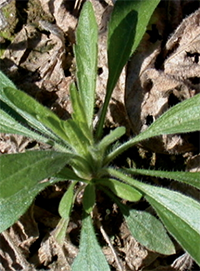 When fall arrives, farmers left with fallow fields are often searching for weed control answers. Taking proactive measures in fall can help avoid increased weed pressure in spring and beyond, the chances of which become even greater if fall delivers cool, wet conditions.
When fall arrives, farmers left with fallow fields are often searching for weed control answers. Taking proactive measures in fall can help avoid increased weed pressure in spring and beyond, the chances of which become even greater if fall delivers cool, wet conditions.
Three available management options include tillage, cover crops, herbicide applications or a combination of these. Retailers should help farmers determine which of the three tips below for fall weed control on fallow acres is the right approach for them.
- Using tillage
On conventional till acres, tillage is an option in fallow fields to help manage weed pressure. If these fields are particularly weedy, it might require two passes. But even using multiple passes has its limitations in terms of effectiveness, especially on larger weeds. Also, it’s important to remember that tillage affects both emerged weeds, as well as seedbanks. - Consider cover crops
There are late-season cover crop options available for fallow acres that can help prevent further weed infestation. For example, if farmers plan to plant soybeans in those fields next season, winter cereals, especially cereal rye, are particularly beneficial by providing good weed suppression and excellent erosion control. They may also help avoid fallow ground syndrome in crops next spring. But while cover crops can help prevent more weeds from emerging, they won’t control weeds that were already present. - Fall burndown using herbicides
On no-till acres, the most effective fall weed control option for fallow fields is a complete burndown application. If planting fall cover crops, a burndown ensures a clean field to plant into. If fields will stay fallow through the winter, a burndown application helps ensure less work will be needed in the spring to get fields ready for planting.
It’s important to research options before making a burndown recommendation as many soybean herbicide options are not labeled for fallow field use. One choice is Elevore® herbicide, which is not only labeled for fallow field use but also works in challenging fall climate conditions. It has excellent activity on marestail, up to 8 inches tall, as well as other ALS- and glyphosate-resistant species.
Additional benefits of fall burndown with Elevore include:
- Providing the ability to combine a fall burndown treatment to control late-season emerged weeds with a spring residual herbicide treatment like Sonic® herbicide for enhanced weed control through planting.
- Controlling winter annuals before they get established, so fields are ready to plant as soon as farmers are ready.
- Reducing the dead mat of weeds that may remain after a spring burndown, which speeds soil warming and dryout, especially in no-till fields.
- Helping create a warmer, drier seedbed for uniform emergence and better seedling vigor.
- Reducing insect pressure by controlling weeds that serve as habitat for populations to become established.
To learn more about how Elevore can keep your customers’ soybean fields clean this fall, contact your Corteva Agriscience territory manager.
Elevore® and Sonic® are not registered for sale or use in all states. Contact your state pesticide regulatory agency to determine if a product is registered for sale or use in your state. Always read and follow label directions.